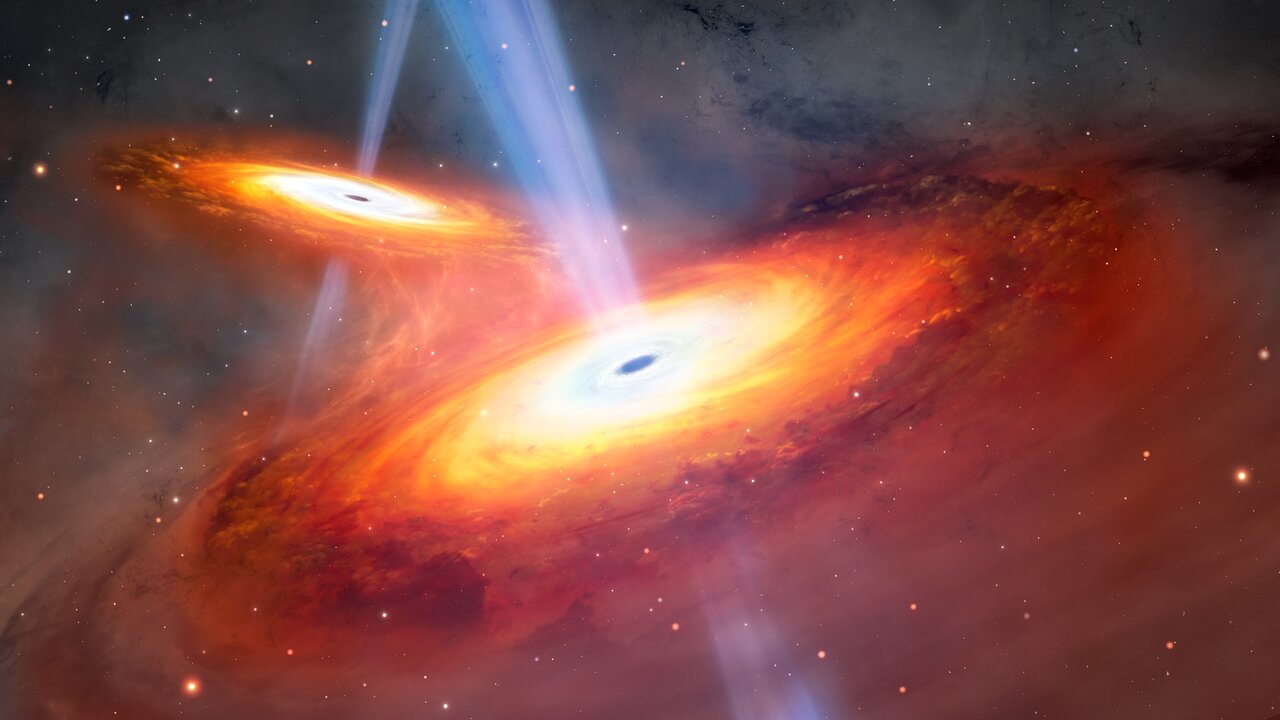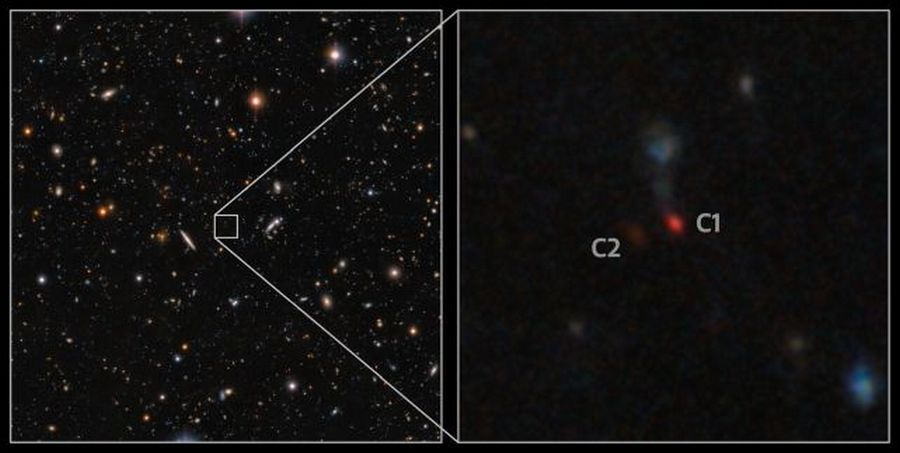Astronomers finally got confirmation that galaxies collided in the early Universe. Scientists have managed to record two quasars that are merging. This event occurred only 900 million years after the Big Bang. This is the first pair of merged quasars discovered at this early epoch.

After the Big Bang, the Universe underwent intense cosmic formation, but previous studies have found only single galaxies. Astronomers are delighted that they have finally managed to find such a pair. Confirmation of the merger of quasars indicates that such processes did occur in the young Universe. The discovery will also help detect more galaxy mergers during this early period.

“The existence of merging quasars in the Epoch of Reionization has been anticipated for a long time. It has now been confirmed for the first time,” explains astronomer Yoshiki Matsuoka of Ehime University in Japan.
Merger of galaxies during Cosmic Dawn
Quasars are some of the brightest objects in the Universe. These are galaxies at the center of which a supermassive black hole absorbs huge amounts of dust and gas, which creates a bright glow of friction-heated matter due to superstrong gravity. Scientists believe that quasars can form when two galaxies merge, with more matter concentrated in the center.
Because quasars are bright and easier to find, cosmologists expect a high rate of galaxy mergers during the Cosmic Dawn. This will help us understand the Epoch of Reionization, when light ionized neutral hydrogen, clearing it and allowing light to freely penetrate.
Accidental discovery
Finding these mergers proved difficult, because the discovery was made by accident. Matsuoka and his colleagues were looking at data from the Subaru telescope and noticed two extremely red sources nearby. “While screening images of quasar candidates I noticed two similarly and extremely red sources next to each other. The discovery was purely serendipitous,” Matsuoka says.
The researchers made further observations with the Subaru and Gemini North telescopes, as well as ALMA. They found that the objects were not only real and very distant, but also separated by a gap of only 40,000 light years.
The team also finds that much of the light from the galaxies is the result of star formation, and they are connected by a gas bridge, indicating an interaction and merger process. Each galaxy contains a supermassive black hole, with a mass of about 100 million solar masses. That’s a lot for the early Universe – even the black hole at the center of Milky Way has a mass of just 4.3 million solar masses.
Researchers are working to analyze ALMA observations to characterize the dust and gas surrounding the two galaxies.
According to noirlab.edu


